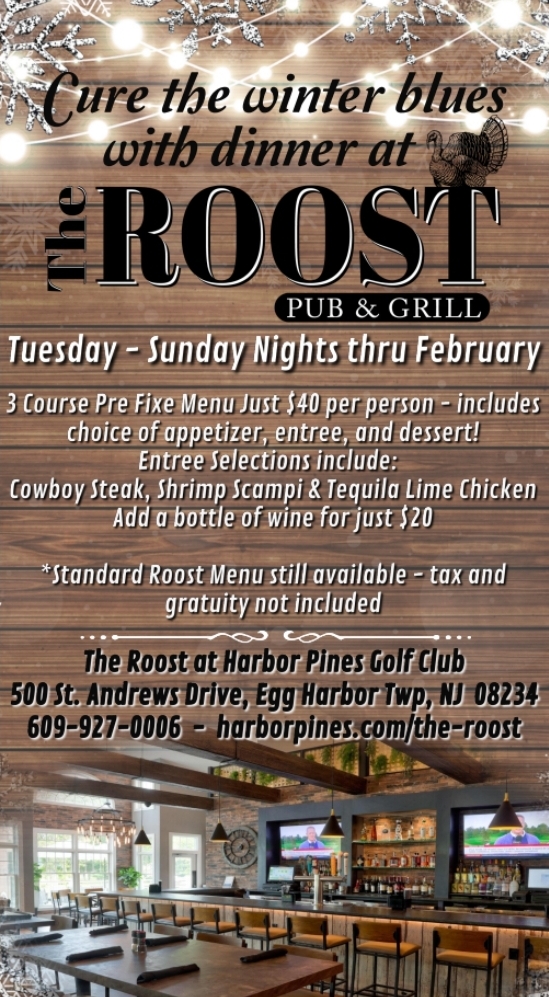By William Kelly
Birmingham, Selma and Memphis are all cities associated with Martin Luther King, but now we have Camden and Maple Shade.
When Preservation New Jersey released its 2024 list of Top 10 endangered historic properties in the state, Martin Luther King’s Camden home was on top of the list.
I didn’t know Martin Luther King had any ties to South Jersey until I read the obituary of a Burlington County lawyer, W. Thomas McCann, which mentioned, almost in passing, that he once represented a Maple Shade bartender who was charged with civil rights violations for refusing to serve Martin Luther King and his friends.
The Maple Shade bar, called Mary’s Place, was located on a clover leaf intersection off of Route 73, so I went there and took some photos of the place which was closed and ready for demolition by the state Department of Transportation. I wrote about it in my blog, and shortly thereafter was contacted by Patrick Duff, a used car salesman and amateur rabble rouser who had stumbled on the Maple Shade incident like I had while researching a different topic.
Duff asked me to meet him at the now vacant lot once occupied by Mary’s Place. I met him there, along with a reporter for The Philadelphia Inquirer and a few of Duff’s friends.
Duff passed around a copy of the original complaint signed by “Michael King,” as MLK was then known, and three of his friends, against the owner/bartender of Mary’s Place, Ernest Nichols, a German veteran of World War I who refused to serve them one Sunday evening in 1950.
When they refused to leave and held a sit-in, Nichols took out a pistol, opened the door and shot it into the air. That was enough for King and his companions, who went to the Maple Shade Police Department and filed a complaint.
Nichols was arrested for a firearms violation and charged with a civil rights complaint, but the most amazing thing about the legal complaint is that King listed his address as 753 Walnut St., Camden, N.J.
Now I grew up in Camden, the son of a Camden policeman, but I never heard of Martin Luther King, Jr. living there. I immediately plugged the address into the GPS on my phone and drove there. It was the left side of a duplex and boarded up, although the right side was occupied. The grounds were littered with bricks, broken glass and syringes, as it was apparently used as a drug house.
I took some photos and shortly thereafter The Inquirer reporter contacted me and asked if I had taken any photos. It was too dark by the time he got there, so I sent him some photos and one appeared in The Inquirer story the next day.
Duff obtained the current owner’s address and visited her. She acknowledged that it was her house and that it belonged to her father, a relative of King’s high school and college mate, Walter McCall, and indeed, they both lived there for a year while they attended the Crozer Theological Seminary in Philadelphia.
Duff had also accumulated some newspaper accounts of the Maple Shade court case, one of which called Mary’s Place “the bar that began a crusade.” Nichols was found guilty of the firearms violation, but the civil rights case was dismissed as it was a relatively new law and this was the first time it was brought to court.
Although the house and the documentation were presented to the New Jersey Historic Preservation Office, they refused to act on it for months, then awarded Stockton University a $30,000 grant to study its historical significance.
Their study caused some controversy when it concluded there was little historical significance to the house where Martin Luther King lived while attending Crozer Baptist Seminary, or the fact that he initiated his first civil rights case in Maple Shade while living there.
The political boss of Camden, Rep. Donald Norcross, however, took an interest, and when MLK’s close friend, Rep. John Lewis accepted a Freedom Foundation Award in Philadelphia, Norcross invited him to visit the Camden house where King once lived.
They cleaned up the house and grounds, closed off the street and put up a tent in front of the house. While TV cameras ran, Lewis said the house “should be preserved for future generations.”
Lewis, who has since passed away, said, “I would love to come here and visit and see an historic marker here and this place restored, and it will be a day of jubilation.”
Norcross also arranged for approximately $200,000 in federal funds to preserve the property, but the money got diverted to other programs. To this day the state Historic Preservation Office refuses to anoint the home with historic status so it can receive grants.
I have since learned of two other connections Martin Luther King had to South Jersey. King’s lawyer, Clarence Jones, who helped write and copyrighted the “I Have A Dream” speech, lived in Longport as a child. His parents were the cook and driver for the Lippincotts, the rich Quaker family that owned the Chalfonte Haddon Hall hotel, which became Resorts International, the first Atlantic City casino.
And in 1958, King gave an important speech on non-violence in the Civil Rights Movement to a conference of Quakers in Cape May, a speech that was tape recorded, but the recording has never surfaced publicly. It’s a treasure that is probably sitting on a shelf somewhere, but it was transcribed and was published in a Quaker magazine, so we know what he said.
Duff arranged for an historic marker to be placed at the Maple Shade location where Mary’s Place was located. He has compiled all the documentation on King’s living in Camden, and the Maple Shade bar incident and is preparing a book about it all. He also called attention to a Philadelphia church where King worshiped and now has official historical status in Pennsylvania.
Today it is quite clear that the Stockton University study misses the mark when it failed to acknowledge the significance of the Camden home, and that the state Historic Preservation Office is missing out on an opportunity to secure New Jersey’s place in the history of the Civil Rights Movement.
















